Richard Florida says Champaign-Urbana is the #3 metro for car-free living, beating out San Francisco, Boston, and New York: https://www.citylab.com/life/2019/09/where-live-no-car-america-public-transit-transportation/598606/ Via @AnthonySkaggs11
Category: Energy
2019-09-03 14:03
I can kinda understand the 0.1% (with secure bunkers on high ground) talking down climate change. But what’s up with ordinary people living near a coast? How are they not demanding urgent action?
2019-09-03 05:50
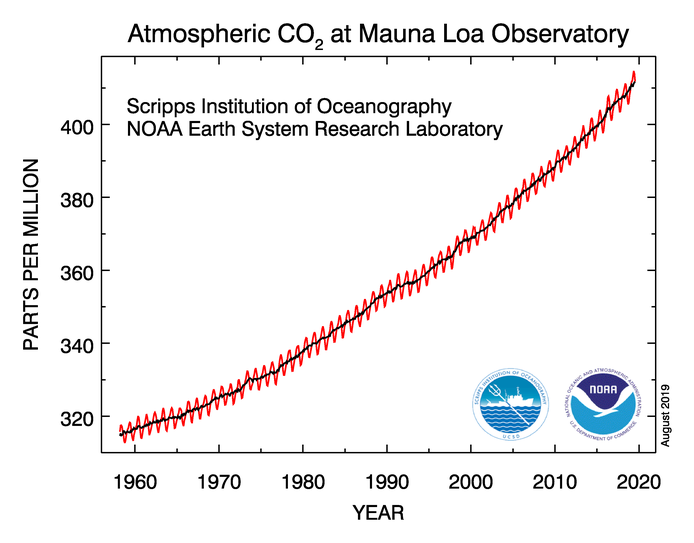
Interesting to me that the Great Recession doesn’t even show up as a blip on this graph.
Effect of eclipse on solar farm
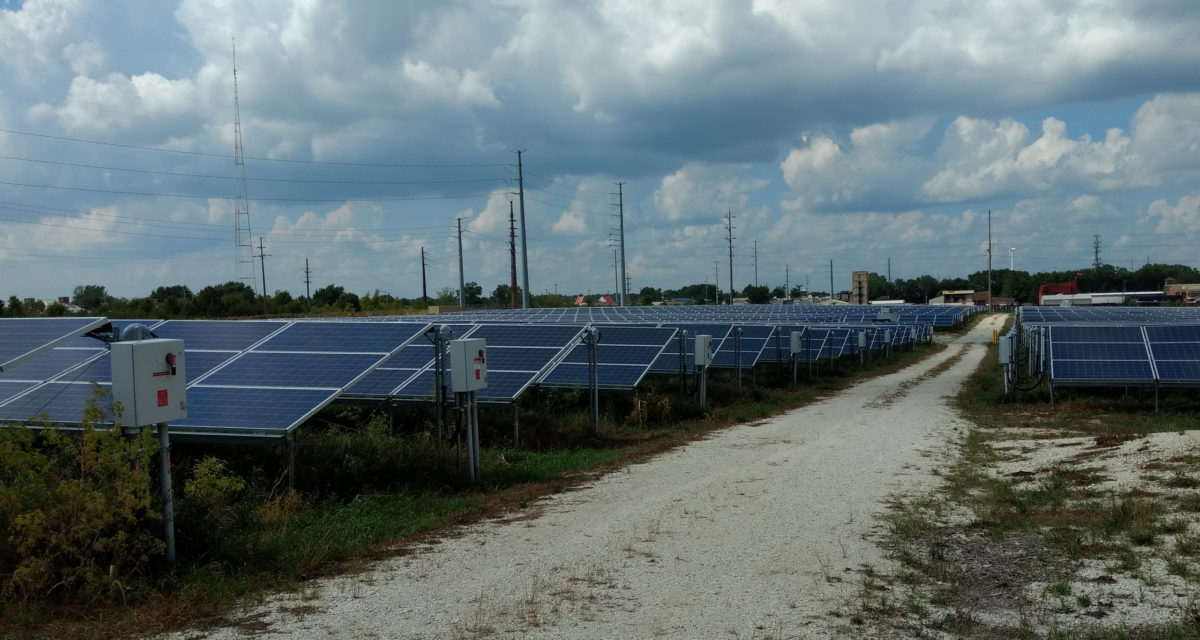
Yesterday’s eclipse prompted me to go look at the day’s power production from the University of Illinois’s solar farm.
Just eyeballing the graph, I’d estimate that eclipsing 94% of the sun reduced power production by about 94%.
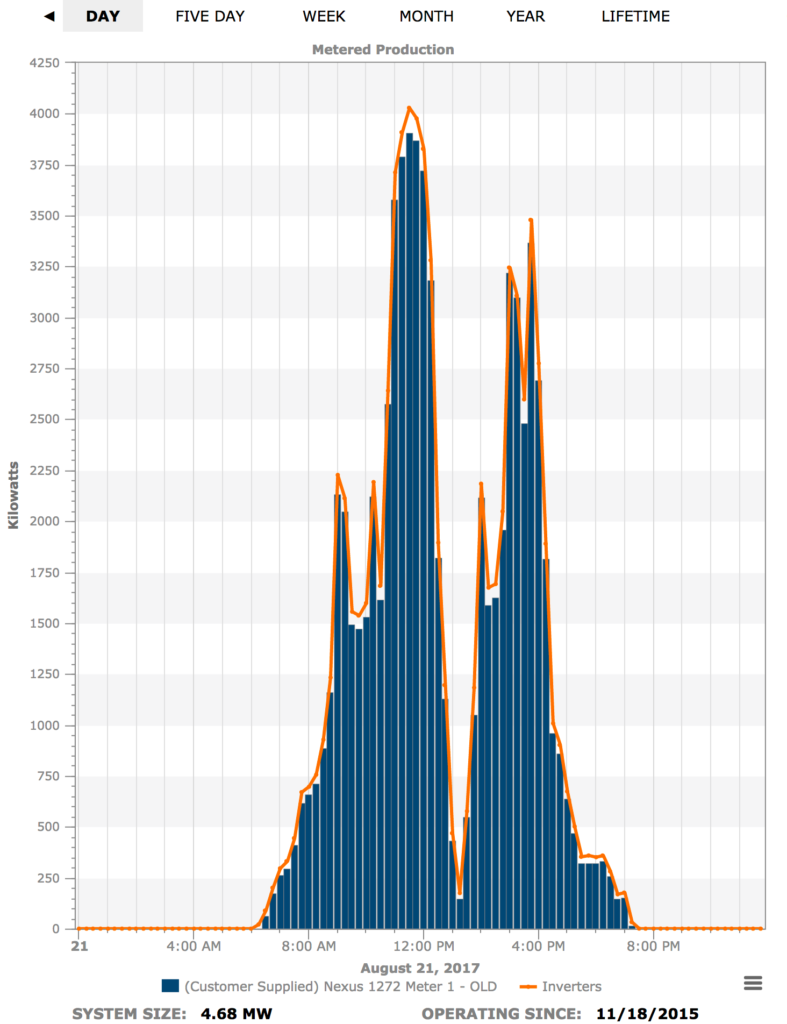
The solar farm is exactly one mile north of Winfield Village. Jackie and I got a tour of the facility a couple of months ago and I got some pictures besides the one at the top, but haven’t gotten around to writing my solar farm post yet.
Chart of the Week: Electric Takeover in Transportation
From the IMF blog, a great chart showing the rate at which motor vehicles took over from horses early in the 20th century. Putting current motor-vehicle and electric-car use on the same graph makes a pretty good visual case that we might be as little as 15 years from the cross-over point where half the vehicles on the road are electric.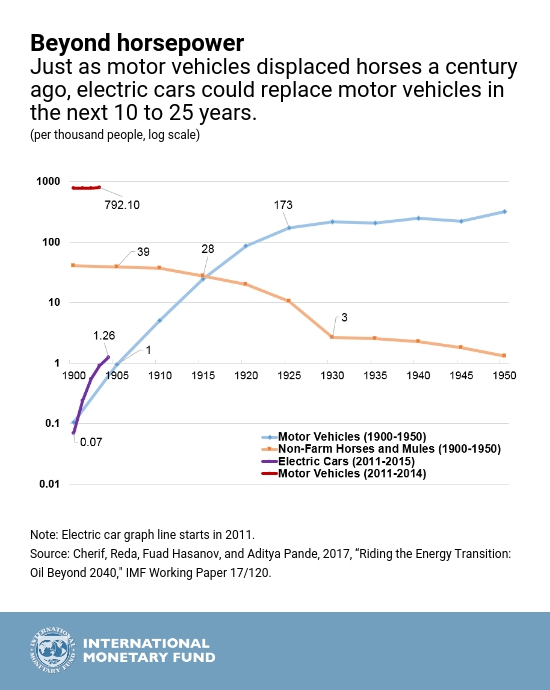
Greater affordability of electric vehicles will likely steer us away from our current sources of energy for transportation, and toward more environmentally friendly technology. And that can happen sooner than you think.
Source: Chart of the Week: Electric Takeover in Transportation | IMF Blog
What cell phones teach us about the power grid
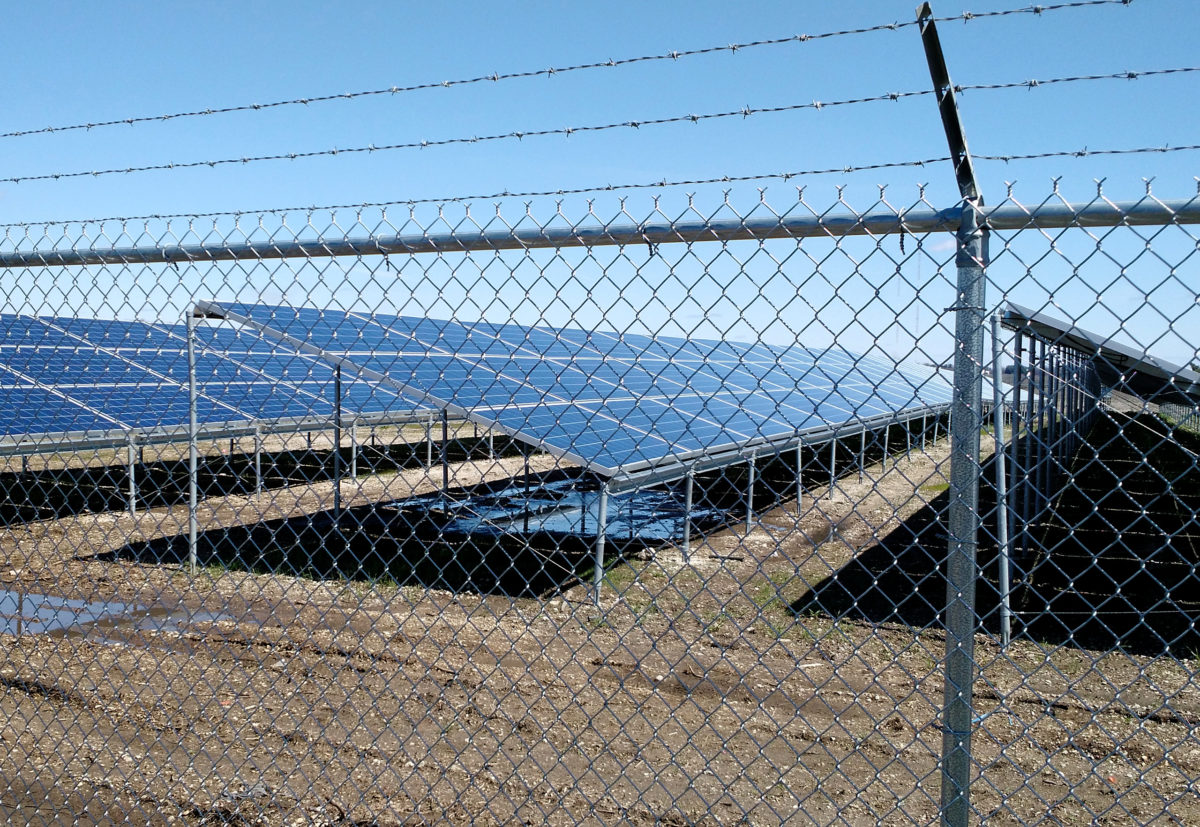
Back in the day the telephone network was a regulated monopoly. As long as the phone company kept the regulator happy, they were permitted to earn a profit on their investment. This resulted in a couple of interesting effects.
First of all, the company was incentivized to invest more in infrastructure: The more they invested, the higher their profit (which was a regulated rate times the size of their investment). This is very different from an unregulated company, where investment is viewed as a cost.
Second, while keeping the regulator happy was always a complex dance, the regulator tended to focus on a few key metrics, one of which was network uptime. This incentivized the phone company to use that large infrastructure investment to produce a network of extreme reliability.
And that network was reliable. In my personal experience with wired phones in that era a wired phone always had service: For two decades as a youth I had literally 100% success picking up a phone and getting a dial tone. Likewise, calls did not drop. Service was rated in nines: 99.999% uptime was 5 nines, 99.9999% uptime was 6 nines.
Of course, that sort of reliability is impossible with cell phones. They move around. Worse yet, they go places where radio signals simply can’t reach.
Cell phone reliability is pretty darned good—let’s call it 98%, as long as you’re not trying to get service in places where nobody else cares if there’s service (the middle of the desert, the middle of the ocean, etc.). But people are not surprised when they find a spot where there’s no service, nor are they surprised if a call drops when elevator doors close or they drive into a tunnel.
This is not to say that cell phone service is bad. My point is simply this: To get the advantages of cell phones, people have accepted a drop in telephone service reliability from six nines down to less than two.
I think this is particularly of interest because I see a potential parallel with the power grid.
The big problem with solar and wind power is that they’re crappy at providing baseline power, for obvious reasons: nighttime, cloudy days, calm days, etc.
If you want a power grid to provide five or six nines of availability, you really need to have enough fossil fuel (or nuclear) generation capacity to provide a large fraction of your total power needs—at least 80%, probably more if you don’t have considerable diversity in your renewable sources (both diverse sources: solar and wind, and geographic diversity: the wind is always blowing somewhere and the sun shines different hours different places).
But just as people learned to get by with less than two nines of phone network reliability, people could certainly learn get by with a less reliable power grid as well.
Thinking of household use, there are certain things that really need fairly reliable power (refrigerator, freezer, furnace), but beyond those few things, we only require a high-availability grid because we’ve set things up with the expectation that it would be there.
Just two or three modest changes to the way we use power could easily accommodate a less-reliable grid.
The easiest one would be for each household to have a guaranteed level of power—enough to keep your food fresh, your pipes unfrozen, and a couple of lights turned on—and then make additional power available on an as-available basis. Alternatively, you could go with a market-based measure where power was cheap when it was plentiful and expensive when it was scarce. A third option would be to distribute the resiliency, with each household providing its own backup power storage or generation capability.
My point here is not to solve the issues for a smart grid, but just to make this point: For a big enough payoff—like the payoff of a internet-connected supercomputer that you can carry in your pocket—we would accept a considerable downgrade in reliability from our power grid.
The payoffs from renewable energy arguably are that big. (In particular, not rendering the planet uninhabitable for humans. But that’s a payoff that’s uncertain and diffuse, with the gains—especially the early gains—going to people other than the ones who need to make the sacrifices.) But there are payoffs to everybody: less particulates in the air, fewer pipeline and tanker spills, fewer truck and rail accidents hauling coal and oil through towns and cities, fewer worker deaths in the coal-mining and oil-drilling industries. And then there are the cost savings: Renewable power has the potential to be very cheap and very reliable in the out-years, once the infrastructure has earned out its initial capital costs.
It might well be worth getting past the idea that the power grid should provide near-perfect reliability, given the payoffs involved in accepting a bit less.
Walking past the UofI’s solar farm

There’s a dearth of good walking routes from Winfield Village to Champaign and Urbana.
From west to east, the choices are Prospect, Lyndhurst/Fox Drive, Neil/Route 45, First Street, and Race Street. The first two are okay if we’re heading to western or central Champaign, but are pretty out-of-the-way if we’re headed to campus or to Urbana. The latter two lack sidewalks and entail long walks along busy roads, which makes them pretty unsatisfactory.
A few weeks ago, I saw a pack of cross-country runners turn up a rather faint double-track on this side of the railroad, which alerted me to the fact that it’s possible to go that way.
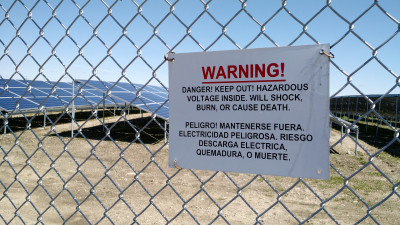 I was doubly interested in going that way, both as a possible alternative route north, and because about one mile north of us there’s a large installation of photovoltaic panels that the University has been calling its “solar farm,” and this bit of double-track leads right to it.
I was doubly interested in going that way, both as a possible alternative route north, and because about one mile north of us there’s a large installation of photovoltaic panels that the University has been calling its “solar farm,” and this bit of double-track leads right to it.
The track runs along the west side of what seems to be research crop fields for the University, although that bit of it may be an easement to provide access to a recently constructed line of pylons for some high-tension power lines.
The solar farm seems to producing quite a bit of electricity on sunny days like today.
Having walked to the solar farm we turned east. Having come that far instead of having to walk a mile along First Street, we only had a quarter of that distance to cover before we reached Windsor and were able to get on a proper sidewalk.
We took a nice tour around the more obscure corners of the research park, including a little diversion past the Fire Service Institute’s training facilities. Then we crossed Route 45 and made our way down to Schnuck’s to pick up a couple of groceries and head on home.
Total walking was 7.7 miles, in my case added to a 3.5-mile morning run.
I had not done much running since settling into the low-carb thing. Together with the walk, it’s a bit of a test of whether I’m seeing any of the endurance benefits I’m hoping to see. (Answer: Maybe. I certainly didn’t get hungry or feel a need to fuel up during the walk. But then, neither did Jackie.)
Coal and fossil forests
I spent my lunch hour at an OLLI lunchtime lecture, learning about why we have coal in Illinois, and why sometimes coal formations have fossilized forests on top. The talk by Scott Elrick (of the Illinois State Geological Survey) was absolutely fascinating.
The first part of the talk looked at the history of continental drift, looking at where the land mass that eventually became North America (and the piece of it that became Illinois) was over the last few hundred million years. During the Pennsylvanian period, Illinois was roughly on the equator, which turns out to be important.
To get coal, you need to have lots of plant matter, but very little sediment. If you don’t have the plant material, you’ve got nothing to turn into coal. But even if you have the plant material, if you have any significant amount of sediment—inorganic material washed in by water and deposited on the ground—you don’t end up with coal, you just end up with shale.
There’s an area along the equator called the “convergence zone” where the weather of the northern hemisphere meets the weather of the southern hemisphere. Most of the time, this zone shifts north and south over the course of a year, meaning the tropics experience wet seasons and dry seasons. However, during the period in question there was extensive glaciation, meaning lower sea levels, which turns out to mean much less shifting of the convergence zone. Which means that, for a geologically long period of time, it rained a lot, all year.
That’s the circumstance that lets you get coal. To be more specific, that’s the circumstance that gets you peat.
Lots of plant matter, but very little sediment (because those plants had lots of roots to stabilize the ground, and they never had to die back, because there were no seasons). The plants grow, the plants die, the dead plants end up on the wet ground, they get covered with water, which limits the oxygen that gets to the plant, meaning that more plants can grow on top of them before they decay. Result: peat.
To get coal takes one more thing: Your peat has to get buried. If it gets buried well enough that air never gets in there, and if it ends up buried deep enough that there’s some serious pressure and heat, and stays there for long enough, all the volatile (i.e. non-carbon) elements in the peat get cooked off. Result: coal.
So, in the Pennsylvanian, we had this long period of nothing but rainy season, allowing layers of peat to build up. But eventually the glacial period ended.
It turns out that glacial periods can end really fast. They start slow, with ice building up gradually over decades and centuries. But they can end very quickly, with centuries of ice melting in a matter of years.
The ice melts, the sea levels rise, and the convergence zone starts showing seasonality, moving north and south over the course of the year. Forests full of plants that expected rain every day suddenly had to adapt to tolerate dry seasons.
This produced a lot of changes, of course. The plant species show dramatic shifts. Crucially, they die back during the dry season—meaning that you start to see a lot more sediment.
In the fossil record, you see this as a thick vein of coal with a thick vein of shale on top.
And right here in east-central Illinois, something very interesting happened. Along a fault line, a series of earthquakes caused the ground on one side to sink. In that sunken area the sediment built up even more quickly—quickly enough to cover whole plants. Fallen trees were covered up faster than they could rot away. Branches with leaves were covered before the leaves could fall off.
The result is a thick vein of coal, with a fossil forest on top of it.
Is that cool or what?
This particular forest, near Danville, Illinois, was the first one discovered that was big enough that paleobotanists could study the forest at the level of the forest community. As opposed to just seeing what plants grew near a few other plants, they could see how the plants that grew near one another changed as you moved from one part of the forest to another.

Scott Elrick showed us all kinds of cool stuff. One thing was this artist’s rendition of the forest, showing large, tall trees growing very close to one another, something that would be rare in forest today. Turns out that these trees—Lycopods—had photosynthetic bark, and didn’t grow leaves until they reached their full height. So they didn’t shade out their neighbors the way modern trees do. They also had very long roots that extended many meters from the trunk, but the root systems were quite shallow, going just a few meters down.
He also had pictures taken from within the coal mine, showing the fossils of these trees—trunk and roots—growing right up out of the coal seam: Trees that had been alive when the weather changed and that ended up with a meter or two of sediment covering the bottom of the trunk fast enough that the tree never fell down. It just fossilized in place.
It was a great talk at which I learned all sorts of things about geology and paleobotany. I’m going to have to follow this guy’s work in the future.
The huge win of moderately high-speed trains
Since there scarcely any thought of building them in the US, it’s silly to worry about the downsides of real high-speed trains, but it’s the sort of thing I tend to worry about. After all, the math is kind of scary.
It’s only 135 miles from Champaign’s Illinois Terminal to Chicago’s Union Station. If your trains can average 135 mph, you could make the commute in an hour—a long commute, but well within the range that many people find acceptable.
On a train that fast, you could depart Champaign at 6:45 and get to your desk anywhere in the Loop by 8:00. Another train that left at 7:45 could get you to Union Station in time to be at your desk at 9:00. Combine those with similar trains that departed shortly after the close of business and got you back to Champaign in time for supper, and suddenly Champaign offers all of its regular attractions plus all the attractions of Chicago.
Personally, I think that would be awful. It could easily attract thousands of new residents to Champaign—and Champaign does not need thousands of new residents.
Happily, the high-speed rail network that the US is actually building operates at a top speed of 110 mph—fast compared to highway speeds, but nothing like an average of 135 mph. I don’t know what sort of average speed that would produce, allowing for congestion and stops along the way, but let’s just pick a number and say we could average 90 mph. That would mean that it would take one hour thirty minutes to get to Chicago.
Suddenly the math for making Champaign a bedroom community is much less compelling. At 90 mph, the furthest you could live from Chicago and still have a one-hour commute would be Gilman. As a practical matter, people who found the idea attractive would probably live in Kankakee instead. Not that I have anything against Kankakee, but better they get thousands of downtown Chicago workers than we do.
While averting the downside of turning Champaign into a bedroom community, moderately high-speed rail service is still great for non-commuters. Amtrak service to Chicago is already pretty good—fine for a day trip to Chicago. I can catch the City of New Orleans at 6:00 AM and get to Chicago before the museums open. After a day in the city I can either leave around 4:00 PM on the Illini and get home in time for supper, or I can have an early supper in Chicago, leave around 8:00, and get home by bedtime. Imagine if those trains averaged 90 mph.
Better, imagine a couple of 110 mph trains making evening runs designed to allow people in Champaign to head into the city after work, arrive early enough for a late dinner—or, if they ate dinner on the train, a show—and then return in time to spend the night in their own bed.
The more I think about it, the happier I am with the (objectively pretty lame) moderately high-speed rail taking shape in the US. It has great potential to make Chicago accessible for half-day or evening visits without the downside of turning Champaign into a bedroom community.
(All these meditations prompted by Andrea Mayeux‘s article Researchers say high-speed rail could fuel U.S. real-estate, economic booms, via Tobias Buckell’s post High speed rail could spark a real estate boom in second tier cities.)
Reducing poverty
I’m big on reducing poverty, both locally and globally. (I do worry that more rich people will use more resources, suggesting that reducing poverty isn’t an unalloyed good thing. On yet another hand, only rich people can afford things like sequestering carbon or preserving habitat. It’s complicated.)
Since I’m interested in reducing poverty, I was interested in Lant Pritchett’s recent talk Everything you think you know about poverty is wrong.
Pritchett and I see pretty much eye-to-eye on how to have a rich country, I think.
These well-off countries have a productive economy, a government that is responsive to the citizens, a capable bureaucracy, and the rule of law.
This has interesting implications for global development, because these are all things where it’s very difficult to improve someone else’s situation. If a country has government by-and-for the elites, or a corrupt bureaucracy, it’s going to be poor—and there’s very little outsiders can do to help. One of Pritchett’s points is that things that seem like they might help, such as improving education, seem to do more harm than good—perhaps because well-educated corrupt bureaucrats are worse than ignorant ones.
His solution is for rich countries to create or expand guest worker programs, which I think is a poor idea.
It’s not that I don’t think it would work. A poor worker who came to a rich country and worked a couple of years could both support relatives back in the poor country and save up enough money to return home and start a business. That would relieve poverty both immediately and going forward. It would also produce another person with first-hand experience of the advantages of a less-corrupt society (as opposed to merely seeing the advantages of getting in on the corruption).
The main reason I think it’s a poor idea is that enforcing a guest worker program eventually requires a police state. Somebody has to check all workers—it’s the only way to identify those who aren’t legally entitled to work. Somebody has to make sure those whose permission to work has expired get fired. Those whose permission to live here has expired, but who don’t go home, become an underclass with all the usual problems of an underclass—crime, violence, oppression, disease. I’ve written about this before (see Missing the point on immigration).
There is also the issue of how guest workers affect salaries, wages, and working conditions of citizen workers (short version: I think it makes them worse).
The ideal solution, of course, would be for every country to be rich enough and free enough that people from all over the world would want to move there. But that just brings us back to where we started.
